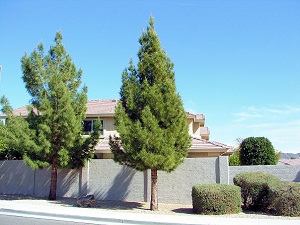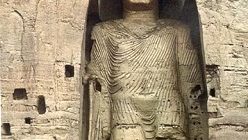The Afghan pine tree has become very popular in the United States. It looks great, but there are more things to consider before planting. Read our guide for more facts and information…
The Afghan pine is also known as the desert pine, elder pine or the Mondale pine. It is a symmetrical shaped tree and is often used as an outside Christmas tree. The Afghan pine features dense growth with short limbs at the bottom, longer limbs at the middle and short limbs again at the top. The tree will grow three to six feet per year, and at maturity will stand thirty to forty feet high and fifteen to twenty five feet wide. Planted in numbers, the Afghan pine gives the look of a forest as its growth is so thick.
Characteristics
As one of its other names implies (desert pine), the Afghan pine does well in dry or semi-arid regions. It is tolerant in challenging terrains and grows well in rocky, alkaline soils such as loam, clay or sand.
The foliage consists of six inch long shiny green needles. Seeds of the Afghan pine are grown in the three to four inch reddish brown pine cones. Foliage grows rather densely.
Care
When planting an Afghan pine seedling, you need to make sure that it is watered every week for the first year. After this, the tree becomes drought resistant and will do well in dry areas. Bottom limbs should be pruned once yearly to keep the symmetrical effect.
Diseases and Problems
One of the main problems presented by the Afghan pine is that it has simply been oversold to the American public. It is a beautiful tree, but it does not grow well everywhere. It will not prosper in areas that receive a large amount of rainfall, but is suited more for the Southwest where the weather is dryer.
The Afghan pine is also susceptible to root diseases. Unfortunately, many of these do not appear until the tree is almost to maturity, creating the problem of having a dead or dying tree on your property. Many of the root diseases are also caused by over watering.
It is also susceptible to blight fungus. Tip blight occurs in rainy periods. This is evident by the dieback of new growth. One unfortunate characteristic of the blight is that once it occurs in the tree, it cannot be removed. You may treat it by pruning back the affected areas and by using copper fungicides but this will work for only so long and eventually the disease will win.
Seedlings
Seedlings, as well as seeds are readily available over the internet. Be sure to plant according to instructions and be sure that your area is good for the tree itself.





